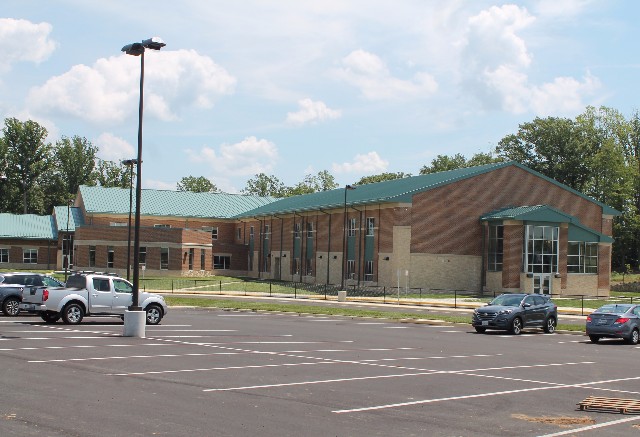In a meeting on Tuesday, August 27, 2024, Stafford County School Board members faced a litany of transportation issues that had plagued the district since the beginning of the school year. A beleaguered transportation system left 3,000 children—nearly 10 percent of the student population—without a ride to school.
On Monday, August 12, the first school day for kindergarten, 6th, and 9th-grade students, parents learned that some children would not have bus transportation. All Stafford County students were scheduled to return to classes the following day, and the problems continued, with about 1,000 students still without a bus.
The main cause of the transportation woes appears to stem from a combination of systemic issues involving new software implementations, staffing challenges, and operational inefficiencies. These issues have led to significant delays, missed routes, and widespread frustration among parents, students, and school administrators.
Software and Staffing Shortfalls
Interim Superintendent Chris Fulmer outlined the problems during the board meeting. He noted that the transition to new routing software, which began planning in August 2023 and went live in March 2024, had not gone as smoothly as anticipated. The new system, intended to replace outdated software and improve routing efficiency, struggled under real-world conditions. This was compounded by a lack of adequate training and the hiring of new staff unfamiliar with the complexities of school transportation logistics.
“Our regression this year in transportation is not just a setback but a significant hurdle that we need to overcome with better training, better support from our technology team, and more realistic implementation timelines,” Fulmer stated.
Operational Oversights
During the meeting, it was revealed that a significant factor contributing to the transportation issues was the inadequate testing of the newly implemented routing software. The software, intended to streamline bus routes and improve efficiency, was not sufficiently vetted in real-world scenarios before its district-wide deployment.
The Core Issues with Inadequate Testing
1. Limited Scope of Pilot Testing:
The transition to the new software included a pilot testing phase that, in retrospect, did not encompass a wide enough range of transportation scenarios. This limited scope failed to uncover potential issues that would later manifest during full operational loads, such as the software’s response to unexpected route changes or its ability to handle real-time updates efficiently.
2. Lack of Real-Time Data Incorporation:
During the testing phase, the scenarios used were based on historical data, which did not accurately represent current routing complexities or variable factors such as construction, traffic changes, and seasonal adjustments. This oversight led to a lack of preparedness for handling dynamic changes in day-to-day operations.
3. Insufficient Stakeholder Involvement:
The testing phase did not involve sufficient input from end users, including bus drivers and route coordinators, who are familiar with the practical challenges of school transportation. Their insights could have identified usability issues with the software interface and the practical difficulties of route execution.
4. Rushed Implementation Timeline:
Under pressure to roll out the software by the beginning of the school year, the testing phase was compressed. This rushed schedule did not allow for a thorough examination of the software under various operational stresses or for subsequent adjustments based on initial findings.
The Consequences
The inadequacy of the software testing phase led directly to several operational failures at the start of the school year:
- Route Errors: The software occasionally generated inefficient or impractical routes that did not consider real-world variables like temporary road closures or localized traffic congestion.
- Communication Breakdowns: Failures in the software’s communication protocols led to delays in updating route changes to drivers and schools, causing confusion and miscommunication.
- System Overloads: The software could not handle the volume of real-time data on the first day of school, leading to system slowdowns and temporary outages.
Proposed Solutions
To address these challenges, the school board and the transportation department are considering several corrective measures:
- Expanded Testing Regimes: Future software implementations will include more comprehensive testing phases, with scenarios that better reflect the actual conditions drivers and route coordinators face.
- Enhanced Training and Feedback Loops: Training sessions for new software will involve actual users earlier in the process, and their feedback will be used to make iterative improvements before full deployment.
- Gradual Rollout Strategies: Instead of a full immediate rollout, the department may adopt a phased approach, where the software is gradually introduced to segments of the district to better manage the transition and mitigate risks.
Effects on Students and Families
The new transportation software’s inadequate testing and subsequent failures profoundly impacted Stafford County students and families, exacerbating stress and disrupting daily routines. The situation illuminated broader issues within the school system’s infrastructure, prompting calls for solutions and accountability from school board members.
According to information presented during the meeting, many students missed school days, affecting their academic routines and progress. The disruption was particularly significant for students with special educational needs who rely on consistent schedules.
Parents had to scramble to arrange alternative transportation, often with little notice, impacting their work schedules and family logistics. This sudden burden caused considerable stress and inconvenience. Students sometimes faced longer wait times at bus stops, in the dark, early morning hours, raising concerns about student safety.
Rock Hill Schol Board member Patricia Healy highlighted the overarching implications of these failures, noting, “The delay in bus schedules isn’t just about inconvenience; it’s a question of safety and security for our students. We must prioritize their well-being above all else.”
Hartwood member Alyssa Halstead expressed frustration with the technology’s role in the transportation issues, saying, “We have over-relied on digital solutions without ensuring robust backup plans. Our children’s ability to get to school should never be compromised by a software glitch.”
Geroge Washington District member Susan Randall addressed the emotional toll on families, stating, “It’s heart-wrenching to hear from parents who are doing their best yet find themselves unable to rely on the very system meant to support their children’s education.”
Maya Guy of the Aquia District focused on communication breakdowns, saying, “Effective communication is the cornerstone of trust between a school system and its families. We failed in that regard when our system faltered, leaving many of our parents rightfully upset and looking for answers.”
School Board Chair Maureen Siegmund, who represents the Garrisonville District, touched on the broader educational impact, pointing out, “Missing school affects more than just academic performance; it disrupts the social and emotional growth of our students. We need to ensure our transportation system is reliable.”
Griffis-Widewater District member Elizabeth Warner summed up the sentiment, emphasizing the need for accountability, “We need to be transparent with our community about what went wrong and how we’re going to fix it. Our families deserve that much.”
Despite multiple requests, none of the elected school board members have agreed to an interview on this topic.
Opt-In and Opt-Out Systems
Stafford County currently uses an opt-out system for its school transportation. In this system, all eligible students are automatically enrolled to receive bus services, and families must notify the school if they choose not to use the service. This approach has been under review, and discussions have been held about potentially shifting to an opt-in system to improve efficiency and resource allocation.
An Opt-In System would require parents to register their children for bus service. This approach ensures that only those who need the service are scheduled, potentially reducing the number of routes and providing more accurate planning and resource allocation.
Proponents say the system improves routing efficiency, as routes can be designed around actual needs, reducing empty seats and optimizing driver and bus utilization. They also claim it is more cost-effective, as fewer unnecessary routes mean fuel, maintenance, and personnel cost savings.
And there’s better resource allocation, as resources can be redirected toward improving service for students who do use the bus, potentially enhancing safety measures and reliability.
The opt-in system also imposes a higher administrative burden, requiring parents to register their children for bus service proactively. Failure to register on time might lead to complications, and some students might be inadvertently left without a transportation option if parents misunderstand the system or miss deadlines.
“Opt-in could force parents to commit, potentially leading to more accurate data for our transportation planning,” said Warner.
“While opt-in might improve efficiency, we must ensure it doesn’t inadvertently exclude any of our students from receiving transportation they are entitled to,” said Siegmund.
Halstead highlighted the potential benefits of reducing unnecessary routes through opt-in, emphasizing, “We can’t keep stretching our resources thin over routes that are barely utilized. It’s not sustainable.”
Healy emphasized the importance of understanding the legal obligations regarding student transportation. She recalled a past scenario in which the school board considered discontinuing bus transportation as a budget measure. To address legal concerns at that time, the board sought an opinion from the Attorney General. The opinion received indicated a legal obligation to provide transportation, though the specifics of the opinion weren’t detailed in the conversation.
Healy suggested revisiting this legal framework to ensure compliance with current laws. She proposed requesting a new opinion from the Attorney General to confirm or update the school board’s understanding of their legal responsibilities, especially before making significant policy changes like shifting from an opt-out to an opt-in system or adjusting transportation zones.
“Before we start talking about what our obligations are and not being obligated, I want to make sure that we have something firm. We could perhaps write for another attorney general opinion,” said Healy.
Looking Forward
The school board is considering several measures to address the crisis. These include revisiting the software’s functionality with the vendor, enhancing staff training programs, increasing communication between transportation and school administration, and potentially adjusting policies around routing and bus stop locations.
Board member Alyssa Halstead suggested, “We need to look at the efficiency of stopping every 100 feet. Why are we not looking at broader walk zones that might help in reducing these delays and managing our resources better?”
The board agreed on the need for an independent review of the transportation department and its recent failures to ensure impartiality and comprehensive solutions. They also discussed the need for a more robust crisis communication plan to manage parent and community expectations during disruptions better.
Recent Stories

The New Dominion Choraliers
Have a Show-Stopping Concert in Store!
Join us on Saturday, May 3 or Sunday, May 4 as the New Dominion Choraliers put on a concert with fun and fabulous songs straight from your favorite Broadway shows and Big Screen musicals. Selections from Pixar, Disney, and Rodgers and Hammerstein offer familiar tunes across the generations, as well as selections from Wicked, Les Miserables, The Greatest Showman, and more!

Properly using a car seat can reduce the risk of injury or death in a car crash by a significant amount, with studies showing reductions of 71% for infants and 54% for toddlers.
Check your child safety seat with the Montgomery County Safe Kids Coalition on Thursday March 20, 2025 from 10am-12:30pm. No appointment necessary.
Fitzgerald GMC Rockville
Your Weight Matters National Convention
Hosted by the Obesity Action Coalition (OAC) since 2012, this highly-anticipated gathering is the nation’s leading gathering focused on empowering individuals with science-based education, support and practical tools for managing weight and improving health.
This unique Convention truly has something
Cascade Landing Community Grand Opening
You’re invited to celebrate the Official Grand Opening of our newest community Cascade Landing in Dumfries, VA. Join us April 12th from 11 AM – 6 PM and fall for your new townhome!
Enjoy our grand opening celebration, complete with








